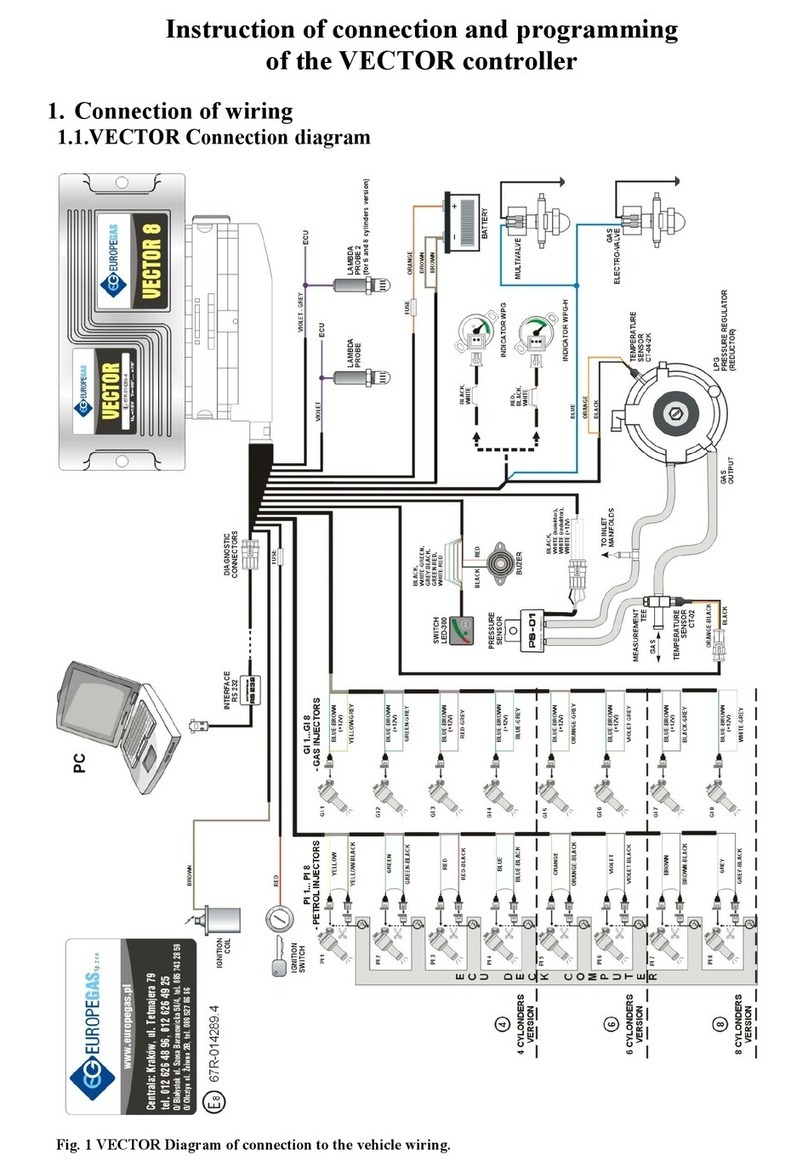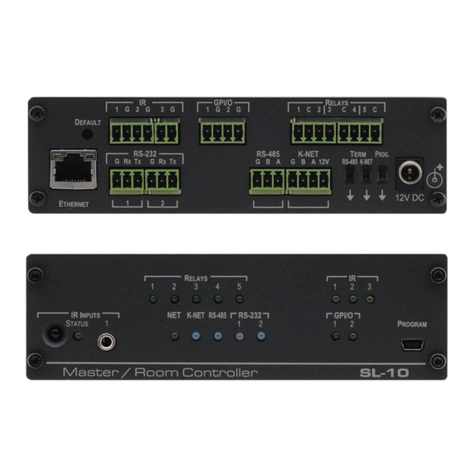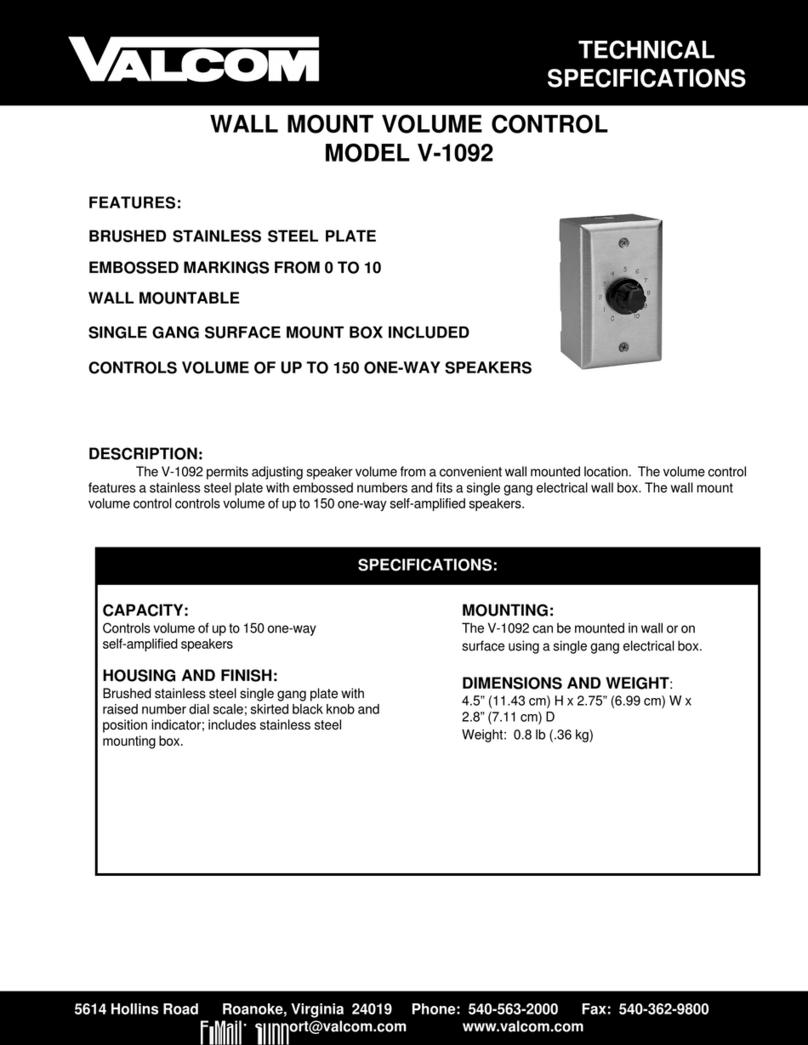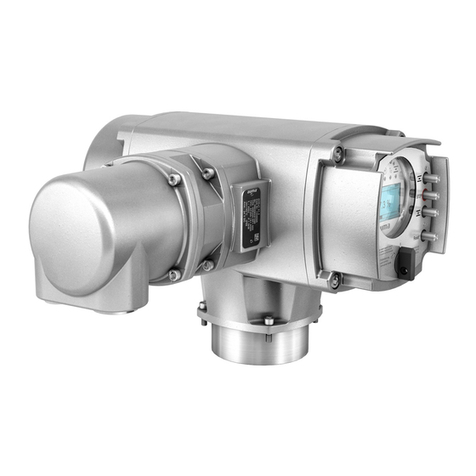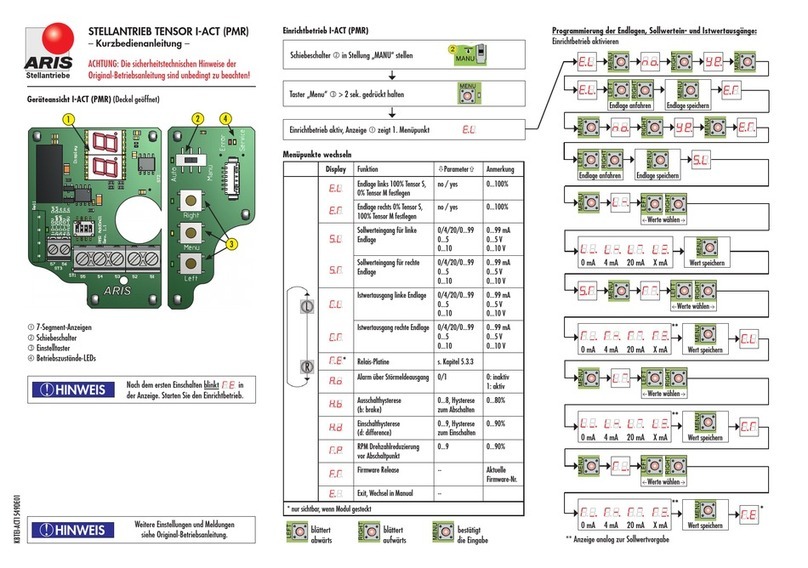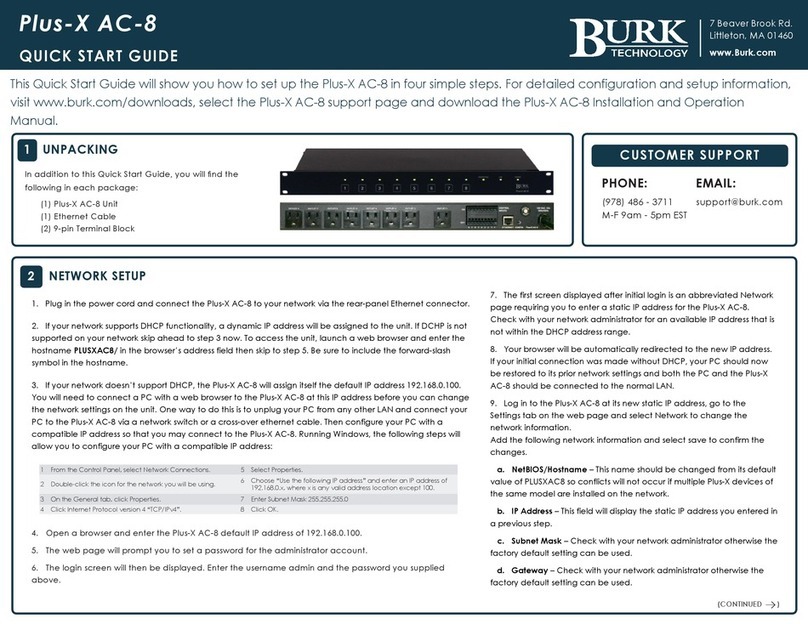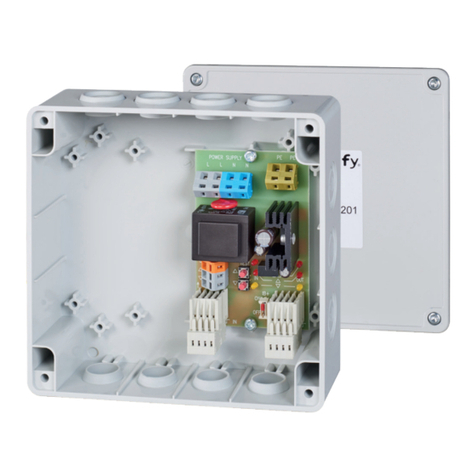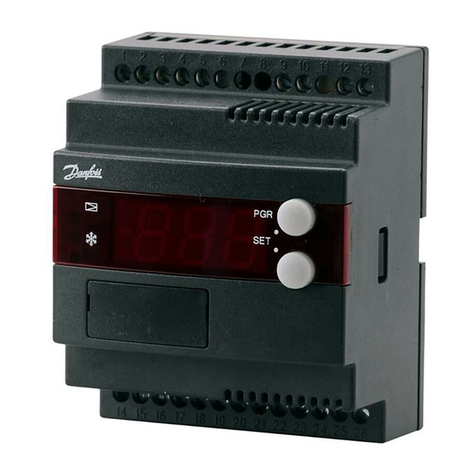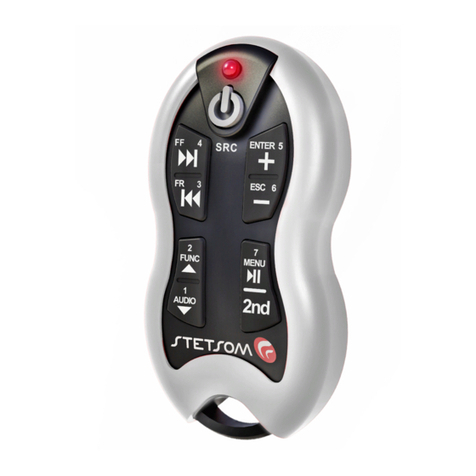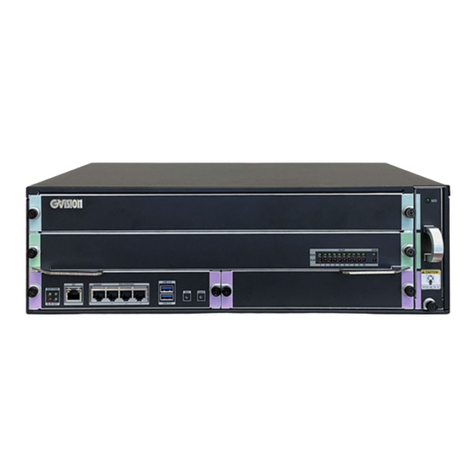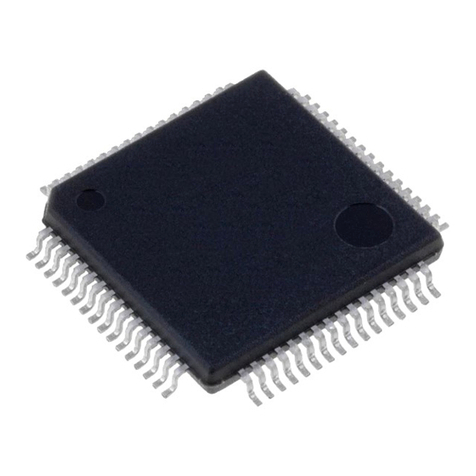EuropeGas OSCAR-N PLUS SAS User manual

OSCAR-N SAS
MINI / PLUS / OBD CAN
controller user manual
ver. 1.10 ate 2013-10-31
This instruction can be also downloaded from:
http://www.europegas.pl/en/Technical-Support/Service-Manuals
Latest software version and example movies of its usage can be downloaded from:
http://www.europegas.pl/en/Technical-Support/Software

Table of content
1. Overview of OSCA -N SAS controllers and their functionalities..................................................3
2. OSCA -N MINI / PLUS / OBD CAN SAS way of assembling.....................................................6
2.1. OSCA -N MINI SAS installation diagram............................................................................6
2.2. OSCA -N PLUS/OBD CAN SAS installation diagram..........................................................6
2.3. Proper installation of OSCA -N SAS ECU.............................................................................7
2.4. Selecting proper type of EG2000 GOLD LABEL injector according car's horsepower..........8
2.5. Usage of changeover switch model LED-5 and model LED-7..............................................10
2.5.1. LED-5 model description:...............................................................................................10
2.5.2. LED-7 model description:...............................................................................................11
3. OSCA -N SAS diagnostic program description...........................................................................12
3.1. Starting the software...............................................................................................................12
3.2. Software settings configuration during every start-up............................................................13
3.3. Main software window description........................................................................................14
3.4. Settings Panel .........................................................................................................................15
3.5. Changeover Panel...................................................................................................................17
3.5.1. Parameters To Gas..........................................................................................................17
3.5.2. Parameters To Petrol.......................................................................................................18
3.5.3. Working and Minimum gas pressure .............................................................................19
3.6. Calibration Panel ...................................................................................................................20
3.6.1. Auto-calibration on idle..................................................................................................21
3.6.2. Collecting maps during the drive and calculation of adjustments..................................21
3.6.3. Auto-adaptation feature...................................................................................................23
3.7. Map Panel...............................................................................................................................26
3.8. Corrections Panel....................................................................................................................27
3.9. Advanced Panel......................................................................................................................28
3.10. Oscilloscope Panel................................................................................................................34
3.11. OBD Panel............................................................................................................................35
3.12. Errors/Warnings bookmark...................................................................................................37
3.12.1. Errors list.......................................................................................................................37
3.12.2. Warnings list..................................................................................................................38
3.13. Conditions bookmark............................................................................................................39
3.14. Service..................................................................................................................................40
3.15. Language...............................................................................................................................40
3.16. Loading and saving settings..................................................................................................41
3.17. Firmware update procedure..................................................................................................42
Hint: Click with Your left mouse button on any of above chapters to go to its page.
2/42

1. Overview of OSCAR-N SAS controllers an their functionalities.
OSCAR-N MINI SAS
•Very fast Central Processing Unit 120 MHz.
•Built-in petrol injection emulator with resistance 100 Ohm.
•Full feedback diagnostic of gas injectors circuits (system
signalizes an error after detecting an circuit intermittence and
automatically goes back to petrol).
•Possibility of: connection and reading the parameters of one
Lambda probe -version LS or connection of separate wire
from ECU harness to cut-off petrol fuel pump circuit after
changeover to gas with programmable time delay -version FP.
•Possibility of starting the vehicle directly on gas by holding switch button.
•Feature of filtering petrol injector pre-pulses (extra-injections).
•Software makes possible to adjust parameters of fuel supply system in very large scale.
Besides the correction due the vacuum in the intake manifold, installer can adjust gas dosage
regarding to PM level, gas temperature and gas pressure. It is also possible to adjust
mixture dosage for each cylinder separately and possibility of preheating the gas injectors
before first changeover to gas.
•„Exit from cut-off on petrol” feature (from too high gas pressure during cut-off conditions).
•Calculation of the multiplier value corrections can be done by a single click on the
„Calculate adjustments” button in the software after collecting petrol and gas maps.
•Auto-adaptation feature ensures that during the driving on gas multiplier line is being
automatically corrected within desired ranges (tolerance in %) in places on the map where
petrol and gas lines are not close enough to each other (works even without connected PC).
•Feature of „full-injection opening mode” for chip tuned cars with petrol injectors constantly
opened during very high loads.
•Possibility to force gas injector to be opened at minimum opening time value (to avoid not
full gas injector opening when too slow injector has been installed).
OSCAR-N PLUS SAS
•All features present in OSCA -N MINI SAS are
included in OSCA -N PLUS SAS moreover it has all
features mentioned below.
•Possibility of connection and reading the parameters of
two Lambda probes at the same time.
•Separate wire from ECU harness to cut-off petrol fuel
pump circuit after changeover to gas with
programmable time delay.
3/42

OSCAR-N OBD CAN SAS
•All features present in OSCA -N MINI and PLUS
are included in OSCA -N OBD CAN SAS.
Moreover it has all features mentioned below.
•Built-in datalogger circuit activated by holding the
switch button during the driving makes possible to
register and save to memory all system parameters.
Helpful to diagnose a malfunction when the car is out
of workshop.
•Possibility of erasing OBD errors plus monitoring
and making corrections of gas injection opening times regarding petrol injection Fuel Trims
separately for both Banks for OBD CAN protocols and for older OBDII protocols directly
from ECU harness (no OBD adapter necessary).
Improvements in SAS controller firmware version 10.92 / software version 1.10
ATTENTION:
All new features in OSCA -N SAS software version 1.10 will work properly only if the SAS
controller has been programmed with latest 10.92 firmware version.
Software 1.10 with firmware file in version 10.92 included, can be used to update any of SAS
controllers with older version of firmware (eg. 0.89).
In case of establishing connection with controller having firmware version older than 10.92 via
software version 1.10 it is highly recommended to run the update procedure as described in last
chapter of this manual.
After upgrading controller's firmware from version 0.89 to 10.92 it will be no longer possible to
work with that controller with software version older than 1.10 nor downgrading the controller
firmware to older version.
HINT:
When the mouse cursor will be held over a particular software functionality for time period
longer than 3 seconds a balloon tip will appear there. It will be containing short description how
given functionality works.
List of new key features an improvements in SAS controller firmware version 10.92 /
software 1.10:
1) PM signal can be read out directly from the petrol injector (no need to connect PM signal
wire)
2) Gas leakage occurrence is being indicated and registered in ECU's memory when the gas
pressure before engine start is lower than the value of "Minimum gas pressure".
3) Automated self-connection via the Bluetooth interface during software start-up.
4) Automatic information about the possibility of upgrading software through Internet.
5) Automatic scaling of calibration map range depending on the maximum injection time
achieved.
6) Active „Calibration map” assistant (using the Up and Down keys when mapping, changes the
value of the multiplier for actual petrol injection time).
4/42

7) Active „ PM / injection time map” assistant (using the PgUp and PgDown Up Down when
mapping changes the enrichment in the active map area).
8) The program automatically starts to record the oscilloscope signals at each start-up.
9) Possibility of introducing parameters of self-defined non-standard gas injectors.
10) Automated "Mazda leaning" feature (when car switches the injection control strategy from
Sequential to Semi-sequential).
11) Possibility of mixture extra-enrichment during rapid accelerations.
12) Exit from cut-off on gas through reducing the gas injection time during big pressure growth
for a defined number of injection cycles.
13) Possibility of hiding from the end user temporary switchover to petrol.
14) Buzzer signal during switchover between fuels.
15) Protection of multiplier settings after calibration against changes caused by pressing
"Calculate multiplier" button.
16) Opportunity to protect controllers settings with a password.
17) Overlapping fuel cycles when switching (for a set number of cylinders cycles are given
simultaneously petrol and gas).
18) Integration with vehicles equipped with Start & Stop system.
19) More precise method of petrol and gas maps collection.
20) Support of gas and reducer temperature sensor NTC 6.8 kOhm.
21) More fluent sequential switchover between fuels.
22) Possibility of automated emergency start with gas without need to hold the switch button.
23) Possibility to read and view the controller's settings and to preview oscilloscope from the
file without necessity of establishing connection with the controller.
24) Possibility of saving in the controller's memory the size of mounted injector nozzles and five
most recent service maintenance inspections.
25) Constantly visible indicator of the collected calibration maps quality in the whole range of
engine loads.
26) Support of for new switch LED-7 model with built-in buzzer and plug (no need to solder
the harness wiring).
27) Possibility to set separate neutral OBD points for the engine working on idle and at higher
PM. (feature available only in OBD CAN SAS)
28) Support of "inverted" OBD corrections. (feature available only in OBD CAN SAS)
5/42

2. OSCAR-N MINI / PLUS / OBD CAN SAS way of assembling
2.1. OSCAR-N MINI SAS installation iagram
2.2. OSCAR-N PLUS/OBD CAN SAS installation iagram
6/42

2.3. Proper installation of OSCAR-N SAS ECU
During the installation of OSCA -N SAS sequential gas injection system it is suggested for the
wire set to point downwards. It is also suggested that it should be placed in such a way to avoid the
negative impact of high temperature and humidity. It is highly prohibited to spray ECU box with
water jets or expose it to long lasting contact with water.
The +12V ignition key red-white wire from ECU harness needs to be connected to the place in
which +12V voltage appears from the moment of turning on the ignition key to ACC position, do
not drops below +9V during engine cranking and remains stable during all the time of engine's
work. Voltage should drop to 0V shortly after turning off the ignition key.
It is recommended to check that the circuit of vehicle's element to which we've connected to doesn't
became temporarily powered off during engine's work like eg. air-conditioning compressor power
supply wire.
It is highly recommended to connect +12V ignition key red-white wire from ECU harness into
original vehicle's +12V ignition key circuit.
7/42

2.4. Selecting proper type of EG2000 GOLD LABEL injector accor ing car's
horsepower
The injectors efficiency should be selected in such way so that at low and high engine load
conditions the petrol injection opening time on gas should be equal to petrol injection opening time
on petrol. Tables given below should help to make right choice.
You might also use “EG2000 Assistant” available in OSCA -N SAS software.
8/42
For LPG
Engine power range Remarks
HP/cylin er (+/-15%) x 4-cyl x 6-cyl x 8-cyl
Type A+ Type A+ none 1,3 Ohm 40 / 50 / 60 HP 160 ~ 240 HP 240 ~ 360 HP 320 ~ 480 HP For pressure 0.8/1.0/1.2 bar
(Blue Label) (Blue Label) (under max load)
Type A Type A none 1,9 Ohm 33 / 42 / 50 HP 132 ~ 200 HP 198 ~ 300 HP 264 ~ 400 HP For pressure 0.8/1.0/1.2 bar
(Gold Label) (Green Label) (under max load)
Type B Type B 2,4 mm 1,9 Ohm 30 / 38 / 45 HP 120 ~ 180 HP 180 ~ 270 HP 240 ~ 360 HP For pressure 0.8/1.0/1.2 bar
(Gold Label) ( ed Label) (one line) (under max load)
Type C Type C 2,1 mm 1,9 Ohm 20 / 25 / 30 HP 80 ~ 120 HP 120 ~ 180 HP 160 ~ 240 HP For pressure 0.8/1.0/1.2 bar
(Gold Label) (Black Label) (two lines) (under max load)
Type D Type D 1,9 mm 1,9 Ohm 15 / 19 / 24 HP 60 ~ 96 HP 90 ~ 144 HP 120 ~ 192 HP For pressure 0.8/1.0/1.2 bar
(Gold Label) (Violet Label) (three lines) (under max load)
Present
type/colour
Former
type/colour
Nozzle
size/mark
Coil
resistance
For CNG
Engine power range Remarks
HP/cylin er (+/-15%) x 4-cyl x 6-cyl x 8-cyl
Type A+ Type A+ none 1,3 Ohm 38 / 45 / 53 HP 152 ~ 212 HP 228 ~ 318 HP 304 ~ 424 HP For pressure 1.3/1.5/1.7 bar
(Blue Label) (Blue Label) (under max load)
Type A Type A none 1,9 Ohm 30 / 38 / 43 HP 120 ~ 172 HP 180 ~ 258 HP 240 ~ 344 HP For pressure 1.3/1.5/1.7 bar
(Gold Label) (Green Label) (under max load)
Type B Type B 2,4 mm 1,9 Ohm 25 / 33 / 39 HP 100 ~ 156 HP 150 ~ 234 HP 200 ~ 312 HP For pressure 1.3/1.5/1.7 bar
(Gold Label) ( ed Label) (one line) (under max load)
Type C Type C 2,1 mm 1,9 Ohm 15 / 20 / 26 HP 60 ~ 104 HP 90 ~ 156 HP 120 ~ 208 HP For pressure 1.3/1.5/1.7 bar
(Gold Label) (Black Label) (two lines) (under max load)
Type D Type D 1,9 mm 1,9 Ohm 10 / 15 / 19 HP 40 ~ 76 HP 60 ~ 90 HP 80 ~ 152 HP For pressure 1.3/1.5/1.7 bar
(Gold Label) (Violet Label) (three lines) (under max load)
Present
type/colour
Former
type/colour
Nozzle
size/mark
Coil
resistance

In case of using standard valve type injectors like AIL IG1 You can use the “Nozzle calculator”
available in OSCA -N SAS software.
Attention:
Algorithm assumes that reducer's differential pressure has been set at 1 bar (for LPG reducer)
or 1,8 bar (for CNG reducer). Calculated values are only approximate values and it is
recommended to start drilling the injector nozzles from a diameter smaller from calculated
one by 0,2 mm and depending on the communicates during autocalibration eventually
increasing it by step of 0,2 mm. Table given below should help to make right choice.
Nozzle iameter [mm] Power for 1 cylin er [HP]
1,8-2 12 – 17
2,1-2,3 18 – 24
2,4-2,6 25 – 32
2,7-2,9 33 – 40
3,0 41 – 48
9/42

2.5. Usage of changeover switch mo el LED-5 an mo el LED-7
2.5.1. LED-5 mo el escription:
Fuel state io e -the yellow diode located in top right switch corner show current fuel status. It can
indicate 5 following states:
1) turned off -system is in petrol mode
2) blinking at 1Hz frequency (once per second) -system awaits for reaching min. reducer
temperature
3) blinking at 2Hz frequency (twice per second) -system is in Auto mode and awaits for
reaching other conditions required for changeover (eg PM, preheating injectors etc.)
4) blinking at 4Hz frequency (4 times per second) -system is signalizing an error (eg.“Low gas
pressure error”), which is causing instant changeover to petrol
5) emits light constantly -system is in gas mode.
Gas level status io es -4 diodes shows amount of fuel level left in the gas tank. 4 diodes emitting
light simultaneously indicate full tank. All 4 diodes turned off means that the gas tank is almost
empty.
Fuel type selection switch -every single press of the button changes the type of selected fuel.
For an emergency start of gas -without usage of petrol (eg. when the petrol fuel pump has been
damaged) it is necessary to:
1) press and hold the switch button before starting the engine,
2) move the ignition key to ACC position,
3) wait for opening of solenoid valve,
4) start the engine on gas,
5) release the switch button.
Attention:
In OSCA -N OBD CAN SAS pressing and holding the button for 5 seconds during driving
on petrol or gas will enable/disable registering the system data parameters to the controller
memory. Later on recorded parameters might be downloaded to the PC with diagnostic
software.
10/42

2.5.2. LED-7 mo el escription:
LED-7 switch model works similar as LED-5 model. Main differences are:
1) Buzzer is incorporated into LED-7 switch.
2) ed diode located in bottom right corner of switch is switched on when buzzer is active.
3) ed reserve diode located on bottom left corner is being switched on when all 4 gas level status
diodes are switched off and gas tank is almost empty.
4) There is a 8-pin female plug on the switch back side so there is no need to do any soldering of
switch cables to ECU wiring harness.
11/42

3. OSCAR-N SAS iagnostic program escription
Attention:
Before running the software please make sure that You have Java un-time Environment in
version not lower than 7 update 25 installed on Your PC. You can also install it after execution
of software installer.
You can always download the latest version from:
http://www.java.com/
3.1. Starting the software
After first use of the software we will be asked if it should automatically search all available ports
and try to establish connection with the controller. If we choose “Autoconnect” the software will
try to automatically connect with ECU. If we choose “Cancel” it will be necessary to choose the
port manually from the list of available COM ports after each start of the software.
If we will enable “Remember last setting” the software will remember our choice for method of
connection and will apply it during its every start
Autoconnect function is searching for a controller starting from the lowest COM number found in
the system. Therefore it is recommended to assign for connected diagnostic interface the lowest
possible COM port index to establish connection more quickly. We can always cancel Autoconnect
procedure by selecting “Disconnect” and select COM port manually.
12/42

3.2. Software settings configuration uring every start-up
It is possible to define default behavior of software during its every start-up. List of adjustable
parameters is located in menu File → Software settings.
•Calibration map autoscaling -Automatical scalling of calibration map (depending on
maximum injection opening time achieved).
•Active Calibration map assistant -Enables active multiplier assistant (use UP and DOWN
keys during map collecting over active point to change value).
•Active RPM map assistant -Enables active PM map assistant (use PGUP and PGDOWN
keys during map collecting over active area to change value). It is possible to define the
active area square size [1x1; 3x3; 5x5].
•Software updates from internet -Software is automatically checking available updates
during every start (active Internet connection required).
•Autoconnection mode ESC = Stop) - Software searches all COM ports available in the
system and tries to connect with ECU automatically during every start . Press ESC to stop
searching.
•Automatic Oscilloscope recording - Software automatically starts recording Oscilloscope
signals during every start.
•Save settings with oscillogram - Software automatically asks user to save Oscilloscope
recorded signals to file during every try of saving settings.
•Bluetooth Connection proposal at start -user is asked for try of establish connection by
Bluetooth during every software start.
•Remember selected language settings - emembers language selected during last usage of
the software.
•Extra-Advanced mode -Software is showing all the Extra-Advanced features.
•Pressure units - Type of pressure units displayed in the software: kPa / bar / psi.
•Temperature units -Type of temperature units displayed in the software: Celsius /
Fahrenheit.
13/42

3.3. Main software win ow escription
Attention: Balloon tips with explanation are being displayed every time when mouse cursor
is being held over particular function in software window.
OSCA -N SAS diagnostic software main window is composed of:
•Main menu bar located on the top of the window.
•Additional icon bar located below Main menu.
•Fuel type changeover switchboard with fuel level indication diodes-left top part of the
window.
•List of active petrol/gas injectors with their injection opening times [ms] -middle top part of
the window.
•Visualization of actual system parameters -right side part of the window.
•Panels with system parameters/settings -central part of the window.
•System status indication bar -bottom part of the window.
Software checks all the COM ports when started and establishes connection with ECU
automatically.
14/42

3.4. Settings Panel
During every first start of the software please choose the OSCA -N SAS ECU work mode LPG or
CNG (depending on the type of installation in the car).
a) set “Fuel type” on which car is running,
b) set proper “Cyls. Numbers” [1...8] according to amount of petrol/gas injectors connected,
c) set proper value of “Cyls. per coil” [1...8 or RPM div] – how many cylinders we have for 1
ignition coil (to get proper value of PM).
In case of taking PM signal from camshaft position sensor please select option RPM div in order
to divide high frequence of PM indication in the software to match with real PM value.
d) PM Divisor -[1...255] -we can divide the PM signal indication by this value
d) set proper value of “RPM signal level” [5V or 12V or Injector] -usually 12V if signal is taken
from ignition coil. Select Injector to take PM signal from petrol injector wiring (in that case PM
signal wire from the ECU harness doesn't have to be connected)
e) set proper “Engine type” [Standard or Turbo] to have proper vacuum range on the map,
f) set proper “Gas injectors type” [H2000/EG2000 type ABC 1,9 Ohm; H2100; EG2000 type A+
1,3 Ohm; Keihin; BRC 1.9 Ohm; Rail IG1 3 Ohm; Rail IG5 3 Ohm; Magic Jet; Matrix; Matrix
HD344/HD544; Rail IG3 Horizon 2 Ohm; Rail IG3 Horizon 2.8 Ohm; Reg OMVL Fast; Valtek 30
3 Ohm; Valtek 30/Rail IG1 2 Ohm; Valtek 30/Rail IG1 1 Ohm; Valtek 34; WGS 11/14/18/24; RAIL
IG7 Navajo LP/HP]
g) for cars with Injectors controlled by full group strategy (all injectors controlled by single signal)
or semi-sequential strategy (injector are being controlled by pairs) change the petrol “Injection
15/42

type” from “Sequential” to “Full group” or “ Semi sequential”.
h) only for cars with petrol injectors controlled by positive pulse please change the value “Injection
controlled by” field from “ ” to „+”,
i) set proper “Lambda sensor” type if connected,
j) select proper type of “Gas level sensor”/pressure gauge installed. If it is necessary to adjust
original standard sensor characteristics of level sensor press “Set min” when gas tank is empty and
“Set max” when gas tank is full.
k) in case of using a “Pressure sensor” / “Vacuum sensor”, “Reducer temperature sensor” or/and
“Gas temperature sensor” different from standard ones (ABS400kPa and 4.7kOhm type sensors,
which are provided with the ECU set and set as default types) please change sensor type in a proper
field.
l) Switch type -select LED-5 or LED-7 model depending on the type installed,
m) “Hide temporary switchover to petrol” - If turned OFF, the LPG/CNG diode blinks during
temporary petrol switchover
n) “Buzzer sound during switchover” – if turned ON buzzer gives sound during every switchover
between fuels
16/42

3.5. Changeover Panel
Set desired parameters for system change over “To Gas” and “To Petrol”:
3.5.1. Parameters To Gas
•“Min. reducer temp. [C]” -minimum temperature of reducers required for opening to
solenoid valve before first changeover to gas.
•“Min. changeover RPM” minimum value of engine PM required for the controller to
changeover to gas.
•“Changeover time -Cold Engine [s]” -additional time period added to “changeover to gas”
time. This extra time is being counted from moment of opening the solenoid valves if
reducers temperature is lower than “Hot engine” temperature value (default: 50 C degree).
•“Changeover time -Hot Engine [s]” additional time period added to “changeover to gas”
time. This extra time is being counted from moment of opening the solenoid valves if
reducers temperature is equal or higher than “Hot engine” temperature value (default: 50 C
degree).
•“Changeover delay per cyl. [s]” time delay between changing over subsequent cylinders
from petrol to gas. In example: when this parameter is set at 0.2 [s] the complete change
over to gas of a 4-cylinder engine from gasoline to gas will last 4*0.2[ms].
When this parameter is set to 0 [ms] all the cylinders will changeover to gas / petrol at the
same time (recommended value for full-group controlled cars).
17/42

•“Changeover simultaneously” -feature of forcing all cylinder to changeover simultaneously
during first autocalibration changeover
Attention:
For full-group controlled cars please remember to set Changeover delay per cyl. [s] to “0.0” s.
and Changeover simultaneously to “ON” before running auto-calibration.
•“Remember emergency start state” - remembers the state of emergency start on LPG/CNG,
and repeats it without need of holding switch button pressed during start.
•“Fuel overlapping cycles” - during first switchover to gas for that number of cycles engine
will be injecting gas and petrol simultaneously (gas pressure must be lower than 100kpa!).
•“Enable Start & Stop” -function required for proper work with vehicles equipped with Start
and Stop system.
3.5.2. Parameters To Petrol
•“Max. RPM” -maximum value of engine's PM at which car can still run on gas. If PM
value will be higher than this value the car will changeover to gasoline. When the PM will
fall back below this value the car will go back to gas mode.
•“Max. load value [ms]” -maximum value of petrol injection opening time at which car can
still run on gas. If petrol injection time value will be higher than this value the car will
changeover to gasoline. When the petrol injection time will fall back below this value the
car will go back to gas mode.
•“Pressure error time [s]” -time period during which the gas pressure could be lower than
the minimum pressure value. If the pressure will drop and stay below this value for time
longer than this time period the car will change over to gasoline from “too low gas pressure
error”.
•“Min. gas RPM” -minimum value of engine's PM at which car can run on gas. If PM
value will be lower than this value the car will changeover to gasoline. When the PM will
go back above this value the car will go back to gas mode.
•“Min. gas Temp [C]” -if gas temperature will fall below that value during driving on gas the
system will go back to petrol mode and will not allow to go back to gas mode until the gas
temperature will be greater than this value.
•“Sequential switchover to petrol” -turns on sequential switchover from gas to petrol with
the time delay between subsequent cylinders as set in “Changeover delay per cyl. [s]”
•“Sequential return to petrol after error” -sequential switchover to petrol after system error
ocurrence (each cylinder with interval of 0.1 sec)
18/42

3.5.3. Working an Minimum gas pressure
•“Minimum pressure” -it is the lowest value of gas pressure at which the system allows to
drive on gas. If the gas pressure will fall below this value, for time longer than value set in
“Pressure error time” the car will change over to gasoline from too low gas pressure.
•“Working pressure” -is the normal value of gas pressure during last autocalibration on idle.
Working and Minimum gas pressure values will be updated automatically after autocalibration. In
case of manual change of reducers pressure these values must be updated every time.
Attention:
The system by default is making corrections of gas injection opening time according to
working gas pressure value. Therefore it is necessary to have working gas pressure parameter
value in the software agreeing to real value of gas pressure in the system.
19/42

3.6. Calibration Panel
Map In Calibration bookmark is showing dependency of petrol injectors opening time on petrol
(red points) and petrol injectors opening time on gas (blue points) [ms] related to value of manifold
absolute pressure (vacuum) in the engine inlet manifold [kPa]. On the right bottom side of map
workspace there is indication of petrol (red colour) and gas map (blue colour) buffers [%].
Colour marker on the intersection of horizontal and vertical dashed lines shows the actual values of
vacuum and petrol injectors opening time.
Left axis is reserved for Multiplier line values (blue horizontal line) which is being used for
adjustment of gas injection opening time for all gas injectors.
The point of multiplier can be marked by clicking left mouse button and moved up or down by
holding this button. Multiplier points can be also modified by keyboard shortcuts:
•← -left arrow -changes active point to previous one by 1 ms
•→ -right arrow -changes active point to next one by 1 ms
•↓ -bottom arrow -decreases the multiplier for particular injection opening time. In example
changing the multiplier value from 1,0 to 0,8 will cause shortening of gas injection opening
time by 20%.
•↑ -upper arrow -increases the multiplier for particular injection opening time. In example
changing the multiplier value from 1,0 to 1,2 will cause elongation of gas injection opening
time by 20%.
20/42
This manual suits for next models
1
Table of contents
Other EuropeGas Controllers manuals
Popular Controllers manuals by other brands
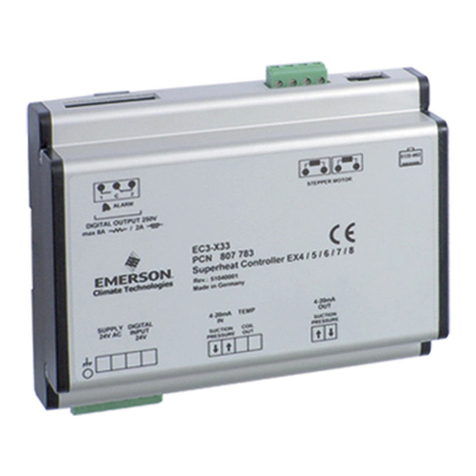
Emerson
Emerson Alco Controls EC3 Series operating instructions
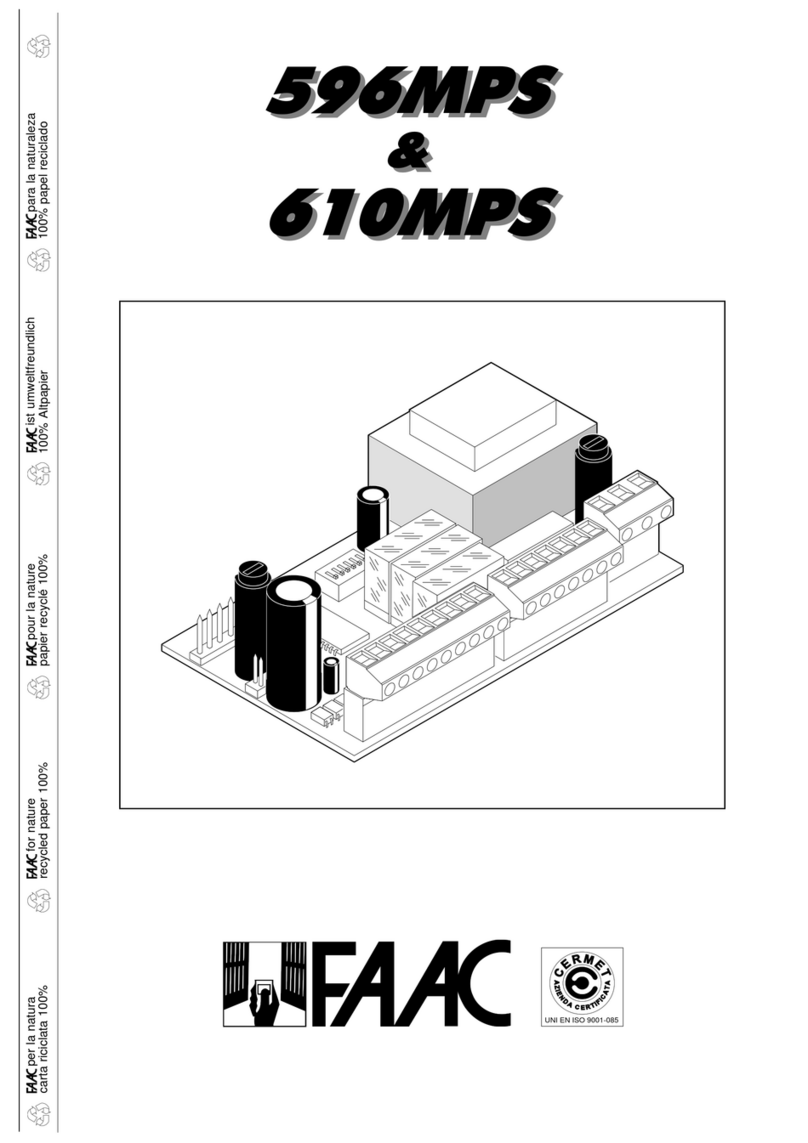
FAAC
FAAC 596MPS manual
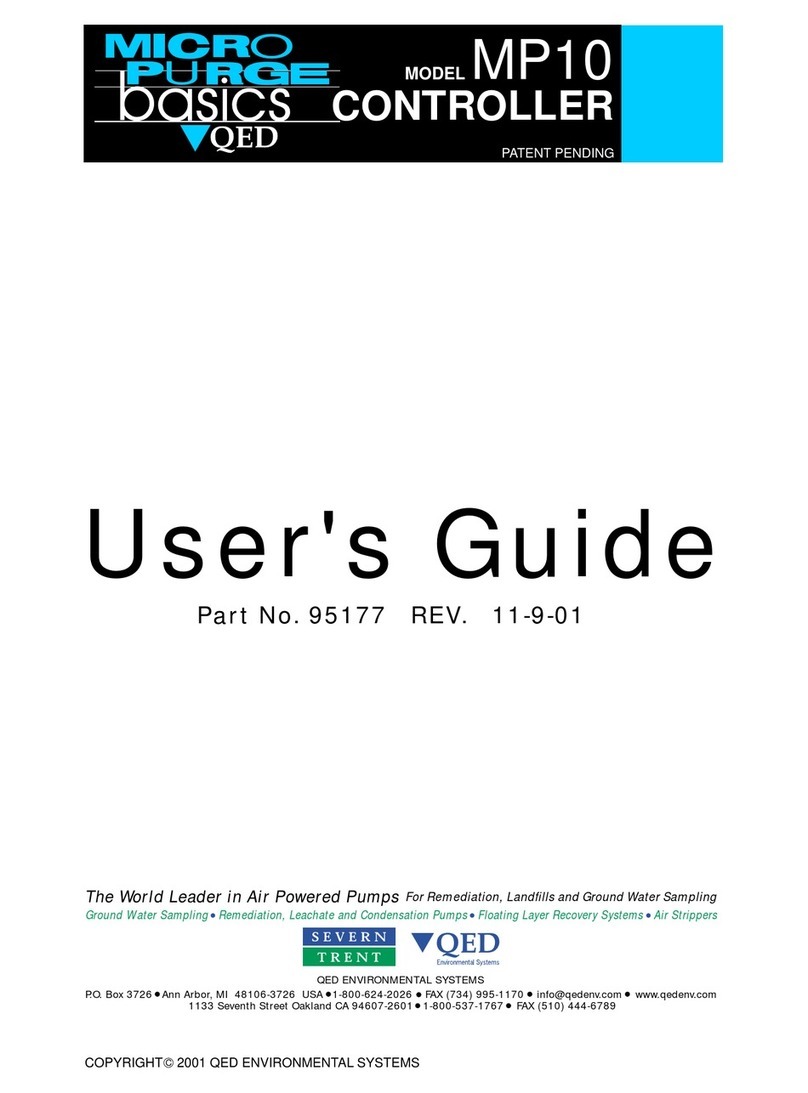
Severn Trent
Severn Trent QED MicroPurge basics MP10 user guide

Mitsubishi Electric
Mitsubishi Electric MELSEC iQ-RD77MS2 user manual
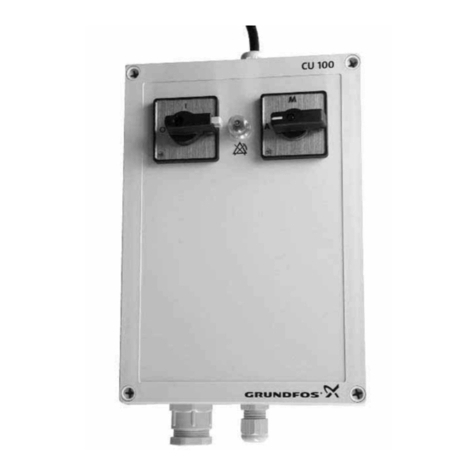
Grundfos
Grundfos CU 100 Installation and operating instructions
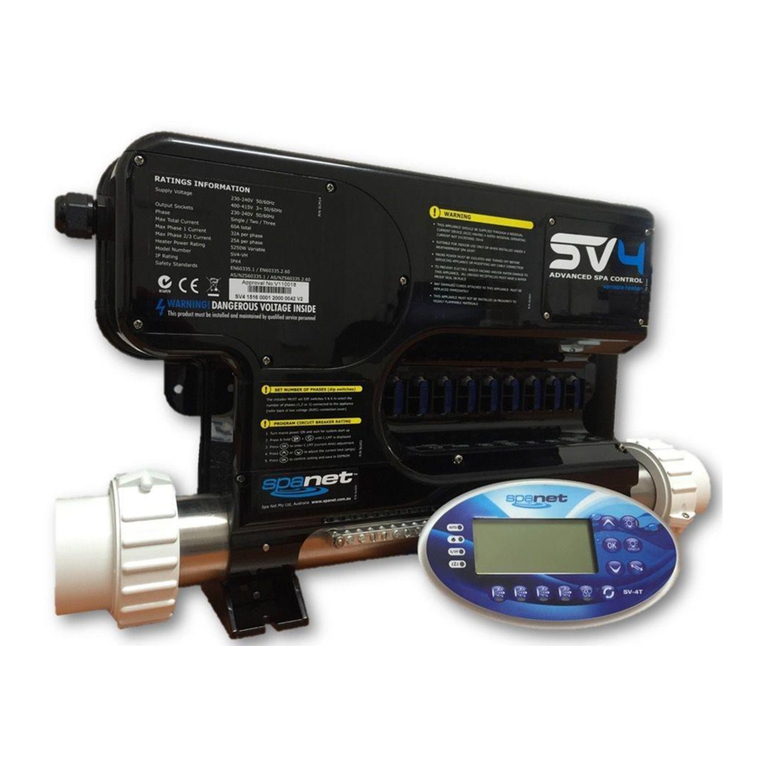
SpaNet
SpaNet SV4 troubleshooting guide
